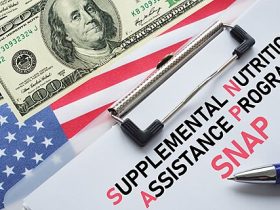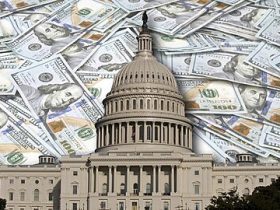Scott Lincicome
As the Supreme Court gears up to hear oral arguments next week in the challenge to President Trump’s “emergency” tariffs (Trump v. V.O.S. Selections, Inc. & Learning Resources, Inc. v. Trump), questions remain over what would happen to the billions of dollars in duties that have been collected from US importers if the Court were to invalidate the tariffs (and thus the basis for those duty collections). Most everyone agrees that some type of refund will likely be required, but it’s far less clear when, how, and to whom this requirement will apply. The Trump administration itself has warned that refunds will be chaotic and administratively burdensome, perhaps hoping to nudge the Court to deciding in its favor even if the law demands otherwise.
As I and my Cato colleagues explained in our amicus brief to the Court, refunds could be administratively burdensome for both the government and US importers. But they needn’t be—and several strong reasons support the government choosing the easy route. To begin with, we note that almost everyone—the Trump administration, US courts, former customs officials, and legal experts—has acknowledged that duty refunds are possible, if not required.
The government has acknowledged the feasibility of duty refunds in these cases,[1] and “[c]ourts have long recognized that when duties or tariffs are later invalidated, the government cannot lawfully retain those amounts.”[2] As the former acting general counsel at U.S. Department of Homeland Security recently stated, “customs officials regularly process refunds,” and U.S. lawyers regularly request them.[3]
We go on to explain that ample precedent exists for the US government to issue blanket duty refunds quickly and easily to US importers owed that money. A similar system could be used to refund the “emergency” tariffs.
U.S. Customs and Border Protection (CBP) has issued broad, automatic refunds when required to do so. For example, the March 2018 renewal of the Generalized System of Preferences (GSP) program required both retroactive application to January 1, 2018 and the refund of any duties collected on GSP-eligible merchandise—including entries that had already been liquidated—during the months in which the program had lapsed.[4] In response, CBP issued Cargo Systems Messaging Service (CSMS) 18–000296 providing for the automatic processing of such refunds for all importers who had (1) used the agency’s Automated Broker Interface and (2) included the GSP Special Program Indicator prefix with the tariff number on their electronic entries. For these entries, CBP explained, refunds “will be processed automatically by [CBP] and no further action by the filer is required to initiate the refund process”—a process CBP expected to complete in approximately three months.[5] CBP issued an even larger volume of automatic, retroactive refunds for the 2013–2015 lapse of GSP, and a similar coding system remains in effect.[6]
If instructed by the Court to do so, CBP could use such a system to refund most of the IEEPA [International Emergency Economic Powers Act] tariffs. For all entries on which IEEPA duties have been paid, CBP has instructed importers to report at least one Harmonized Tariff Schedule of the United States (HTSUS) “Chapter 99” secondary classification related to the IEEPA tariffs at issue.[7] CBP could use these codes to find all relevant entries and refund IEEPA-related duties automatically via the agency’s Automated Clearinghouse (ACH) Refund Program.[8]
Finally, we explain why any other approach to duty refunds in this case would indeed be a giant mess and highly unfair to smaller US importers who deserve to be repaid in a speedy and equitable manner.
An individual refund process—involving a separate Post Summary Correction for each unliquidated entry and administrative protest for each liquidated entry—would be burdensome for U.S. importers and highly inequitable.[9] During Fiscal Year 2024, CBP processed approximately 105,103 entries of merchandise each day[10]—totals that have surely climbed in 2025 as millions of daily “de minimis” packages are now also subject to both IEEPA tariffs and formal entry requirements.[11] If, instead of blanket refunds, the government required every importer to affirmatively request a refund from CBP (and file administrative protests to keep claims alive in the meantime), it would not only advantage large, sophisticated importers over smaller ones—denying the latter finite resources illegally commandeered by the government—but also impose a significant burden on an already-stretched CBP.
We don’t know how the Court will rule in this case or how any subsequent refund process would shake out. If refunds do become a giant and controversial headache, however, we all should know that they didn’t have to be.
[1] See, e.g., Emergency Motion for a Stay Pending Appeal and an Immediate Administrative Stay, V.O.S. Selections, et al. v. Trump, et al., No. 25‑1812, Doc. 6 at 4, 25 (Fed. Cir. May 29, 2025); Brief for Appellants, Learning Resources, Inc., et al. v. Trump, et al., No. 25–5202, Doc. 2122774 at 56, 59 (D.C. Cir. June 27, 2025).
[2] Joshua Claybourn, Recovering Unlawfully Imposed Tariffs: Navigating Refunds of IEEPA Duties, Lawfare (Sept. 17, 2025), https://www.lawfaremedia.org/article/recovering-unlawfully-imposed-tariffs–navigating-refunds-of-ieepa-duties.
[3] Alyssa Aquino, ‘Uncharte Territory’: What Would Importers Have to Do to Get Their Tariffs Refunded?, Law.Com (June 2, 2025) https://www.law.com/newyorklawjournal/2025/06/02/uncharted-territory-what-would-importers-have-to-do-to-get-their-tariffs-refunded/.
[4] Consolidated Appropriations Act, 2018, Pub. L. No. 115–141, § 501(b)(2), 132 Stat. 348, 1050 (2018), https://www.congress.gov/bill/115th-congress/house-bill/1625/text.
[5] See U.S. Customs and Border Protection, CSMS# 18–000296-Generalized System of Preferences (GSP) Reinstated Through December 31, 2020 (Apr. 20, 2018), https://content.govdelivery.com/accounts/USDHSCBP/bulletins/1eb254f. Non-ABI filers and ABI filers that did not include the proper SPI, on the other hand, were invited to “submit a duty refund request to CBP no later than September 19, 2018.” Refunds in these cases were completed over several months.
[6] Renewal of the Generalized System of Preferences and Retroactive Application for Certain Liquidations and Reliquidations Under the GSP, 80. Fed. Reg. 44986 (July 28, 2015). For the current system, see Office of the U.S. Trade Representative, GSP Expiration: Frequently Asked Questions (Jan. 2021), https://ustr.gov/sites/default/files/gsp/GSPExpirationFAQ.pdf; see also U.S. Customs & Border Protection CSMS #45244051 (Dec. 21, 2020); Liana Wong, Generalized System of Preferences (GSP): Overview and Issues for Congress, Cong. Research Serv. (Nov. 22, 2023), https://www.congress.gov/crs-product/RL33663.
[7] See, e.g., U.S. Customs and Border Protection, CSMS nos. 64649265 (Apr. 4, 2025), 64680374 (Apr. 8, 2025)
[8] See U.S. Customs and Border Protection, ACH Refund (last modified Oct. 10, 2025),https://www.cbp.gov/trade/automated/ach/refund. As of September 30, 2025, all duty refunds were to be disbursed electronically, per a March 2025 White House directive. See Mallory Alexander International Logistics, Federal Government Ending Paper Checks for Duty Refunds (Sept. 17, 2025), https://www.mallorygroup.com/federal-government-ending-paper-checks-for-duty-refunds/; Exec. Order No. 14,247: Modernizing Payments To and From America’s Bank Account (Mar. 25, 2025); New Functionality Pertaining to Electronic Refunds in the Automated Commercial Environment, 90 Fed. Reg. 45956 (Sept. 24, 2025).
[9] Claybourn, supra n.90, Recovering Unlawfully Imposed Tariffs.
[10] U.S. Customs and Border Protection, On a Typical Day in Fiscal Year 2024, CBP (last modified June 26, 2025), https://www.cbp.gov/newsroom/stats/typical-day-fy2024.
[11] Customs and Border Protection, “What does Executive Order 14324, ‘Suspending Duty-Free De Minimis Treatment for All Countries’ Do?” in E‑Commerce Frequently Asked Questions (last modified Sept. 29, 2025), https://www.cbp.gov/trade/basic-import-export/e‑commerce/faqs.









